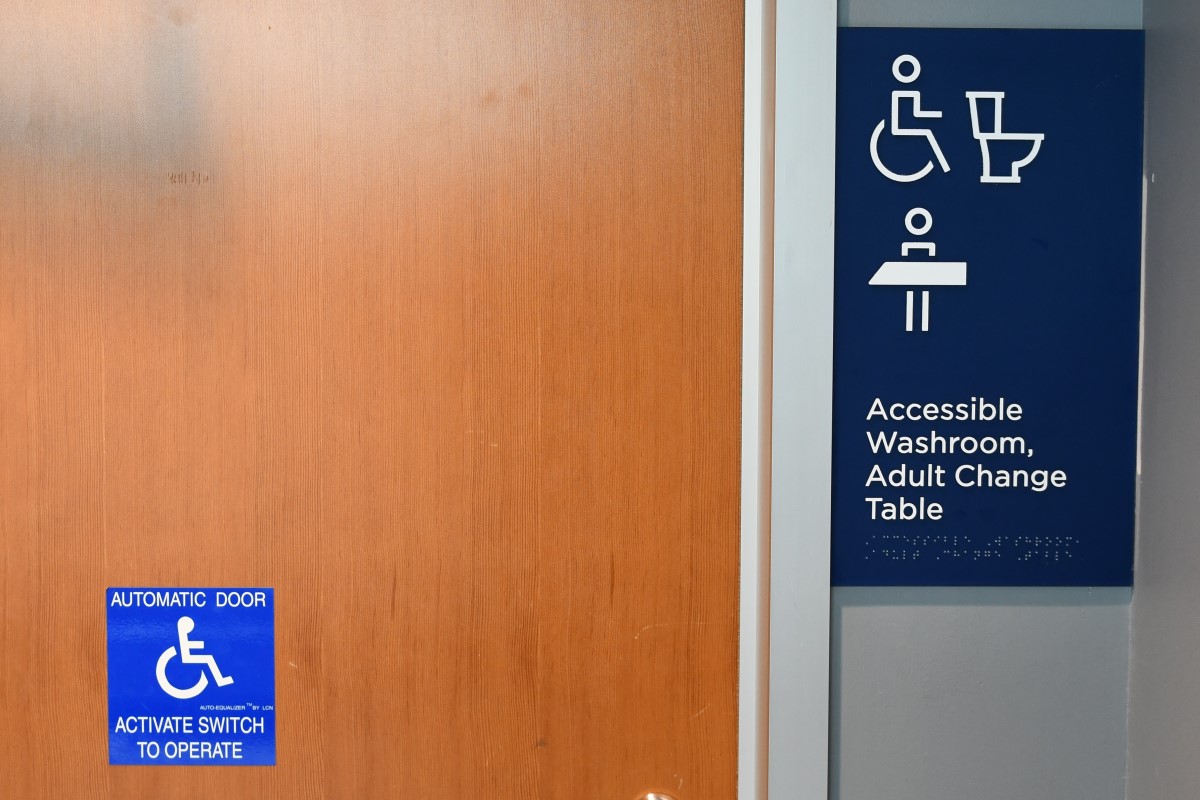New Signage
Major increase in gender-neutral washrooms on campus
September 15, 2023
Share

In a significant and collaborative effort to make Queen’s more inclusive, safe, and welcoming for transgender and/or gender non-conforming people, all single-user washrooms across campus have now been converted into gender-neutral washrooms – with symbol-based signage that focuses on the usage of the space rather than the identity of the user. Single-user women’s washrooms and single-user men’s washrooms are now simply washrooms that everyone is welcome to use.
The use-based signage – the universal standard for inclusive design – is now affixed to approximately 250 single-user bathrooms across Queen’s Kingston campuses. Three additional universal single-user gender-neutral washrooms are being constructed in Robert Sutherland Hall, Mackintosh Corry Hall, and Coastal Engineering Laboratories on West Campus.
The gender-neutral signage was developed in collaboration with the university’s Built Environment Advisory Group, and followed a recommendation by the Principal’s Action Group on Gender and Sexual Diversity (PAGGAS) to remove gendered signage from single-user washrooms across campus. PAGGAS conducted a comprehensive review of scholarly literature, trade literature, and best practices to identify how gender-inclusive washrooms and changerooms should be instituted at Queen’s.
“It can be frustrating to encounter washrooms that are clearly for a single user but are signed in such a way that makes them inaccessible for many transgender and nonbinary people,” says Lee Airton, PAGGAS co-chair and Assistant Professor of Gender and Sexuality Studies in Education in the Faculty of Education. “Being seen to enter a gendered washroom – even a single-user one – can make a trans person vulnerable to harassment. Removing gendered signage from single-user washrooms seems like such a simple thing but is a vitally important step to take in order to make Queen’s spaces safer and more accessible.”
The Principal’s Action Group regularly consults with Facilities to ensure inclusiveness in washrooms and changerooms at Queen’s, and the new gender-neutral signage on all single-user washrooms is an important part of that ongoing work, Dr. Airton says.
Integrated Communications produced the use-based signage, conducting an environmental scan to determine best practices for icon accessibility and to identify any universally recognizable symbols. The new signage also follows Queen’s facility accessibility design standards.
The signage includes the icons, with text below, along with braille. Various icons identify the use of the space, whether a washroom, ambulant washroom (with accessible drop bar), shower, accessible shower, urinal, or baby or adult change table.
“These changes are a significant milestone in becoming a truly inclusive and safe campus with a built environment that provides equal access for all users,” says Stephanie Simpson, Vice-Principal (Culture, Equity, and Inclusion). “Queen’s is committed to this process and moving forward, all new buildings constructed on campus must include single-user gender-neutral washrooms alongside multi-stall gendered washrooms.” This is another recommendation from PAGGAS, of which Stephanie Simpson is a member.
The Campus Map washrooms icon shows the current location of all single-user accessible and gender-neutral washrooms on campus.
Over time where funding and space permits, gendered, multi-stall washrooms will be converted to single-user gender-neutral washrooms. Currently in the design phases are projects for Kingston Hall and Mackintosh-Corry Hall. A bank of single-user gender-neutral washrooms means that each washroom has its own toilet, sink and mirror, such that every washroom can be used by anyone, regardless of gender.
Roughly half of students living in residence have access to washrooms that are either private or shared gender-neutral single-user facilities, with plans to convert multi-stall facilities to single-user gender-neutral facilities over time. Individual student needs are also identified and addressed through the accommodation process embedded within the residence application. This means students can submit requests based on gender identity and/or gender expression through their residence application. In food service locations in residence buildings, single-user gender-neutral washrooms are currently available.


